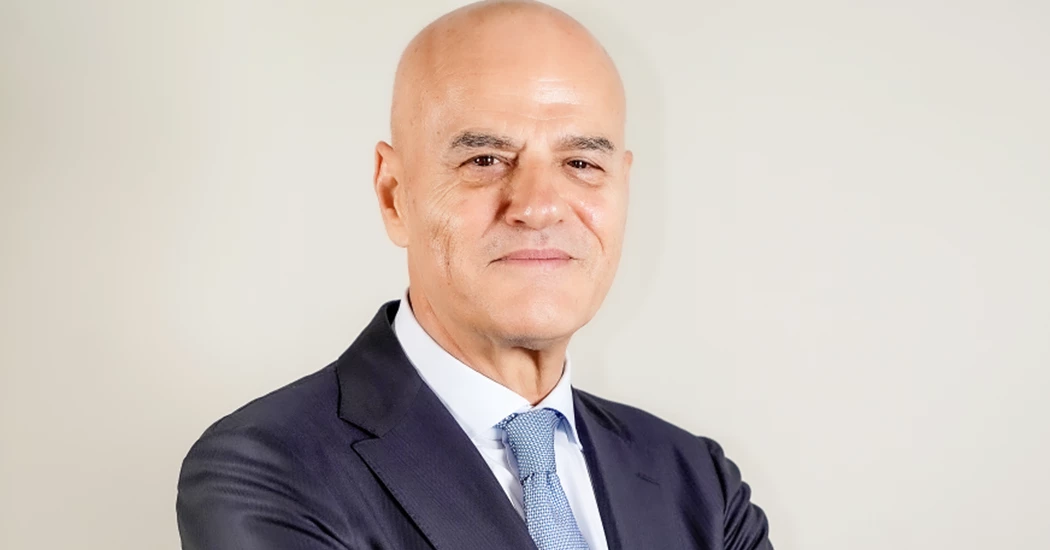Building the sustainable energy system of the future
In an exclusive interview with Energy Connects, Claudio Descalzi, CEO of Eni, outlines how the company is balancing energy security with tackling environmental sustainability challenges, Eni’s projects and collaborations in decarbonisation, the strategic pillars of the Eni and ADNOC partnership, and much more.
How is Eni focusing on the energy transition and helping the industry advance clean energy solutions?
The energy transition requires addressing the urgency of climate change, without negative impacts on energy security and affordability, enabling industries and infrastructures to transform. As an energy company, Eni is aware that we must build a new, more resilient and redundant system to preserve the competitiveness of the economic system. This means avoiding the gap between energy supply and demand, not relying on a single source, and being aware that different levels of development may require different paths to decarbonise the energy mix.
Eni’s strategy, therefore, combines the need to contribute to energy security and to tackle the environmental sustainability challenges. In this direction, in 2023 we confirmed our key medium-to-long term emissions targets: the pathway towards Eni’s carbon neutrality by 2050 first envisages net-zero scope 1+2 emissions by 2035, with a plan to reach -35% of absolute carbon emissions, including Scope 3, by 2030 and -80% by 2040 (baseline 2018).
Eni’s strategy to reach carbon neutrality leverages on an industrial transformation to be implemented by strengthening available and economically sustainable technologies with a neutral approach. We believe in the key role of technology and our strategy grounded on a continuous focus on new technologies and their fast-track deployment. At the same time, we believe that natural gas is a “bridge” energy source in this transition path. Gas is the fossil fuel with the lowest carbon footprint capable of ensuring energy security: it is a programmable source that can support the penetration of renewable energy and the development of new energy solutions. Recognising this crucial role of gas, Eni has long been committed to reducing methane emissions.
Tell us about the strategic pillars of the Eni and ADNOC partnership, also looking at the latest agreement signed earlier this year.
Eni has been present in the UAE since 2018 with a significant portfolio of activities. The Eni and ADNOC partnership spans from exploration, production and development initiatives in the upstream sector, to downstream activities. Last March, we signed a MoU which outlines a framework of cooperation for future joint projects on energy transition, sustainability and decarbonisation. With this agreement, Eni and ADNOC will explore potential opportunities in renewable energy, blue and green hydrogen, carbon dioxide capture and storage (CCS), in the reduction of greenhouse gas and methane gas emissions, energy efficiency, routine gas flaring reduction and the Global Methane Pledge, to support global energy security and a sustainable energy transition.
Could you elaborate on Eni’s projects and collaborations in decarbonisation? Is decarbonisation of transport a strategic focus area for Eni?
The development of bio-energy has an important potential for decarbonising the transport sector. One of the distinctive elements of Eni’s strategy is the innovative vertical integration along the biofuel value chain based on the construction of agri-hubs to produce vegetable oils from raw materials that do not compete with the food chain, to be used in Eni’s biorefineries to produce biofuels.
Biofuels can play an important role right away, complementary to electricity, in transport decarbonisation, without requiring investments in the replacement of vehicles and infrastructure. For light transport on the road, they are necessary to decarbonise the vehicle fleet and to integrate electricity solutions during the path to fully develop the charging infrastructure and the growth of the renewable share in the electricity mix; for heavy transport by road, sea and air, they are indispensable, given the difficulty of electrification of these sectors and the low maturity of other solutions (hydrogen, e-fuel and ammonia/methanol).
Another crucial element for the success of the transition is, therefore, the partnerships with hard-to-abate sectors. In this sense, a fundamental lever of our decarbonisation strategy is the capture and storage of CO2 (CCS) which can play a key role in decarbonisation already in the short term.
What are you particularly looking forward to at ADIPEC this year?
ADIPEC is one of the world’s most influential meeting places where energy players and professionals come together discussing all the main topics in the energy sector. This year, it also comes at a crucial time, in a complex international juncture and in view of the upcoming COP28, where the UAE, as hosting country, is expected to set out its vision for a clean energy transition agenda.
KEEPING THE ENERGY INDUSTRY CONNECTED
Subscribe to our newsletter and get the best of Energy Connects directly to your inbox each week.
By subscribing, you agree to the processing of your personal data by dmg events as described in the Privacy Policy.















